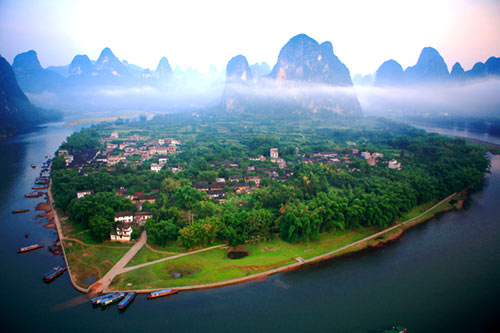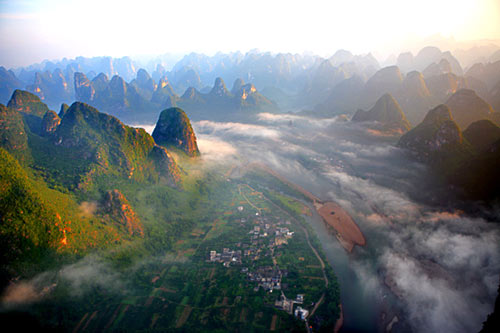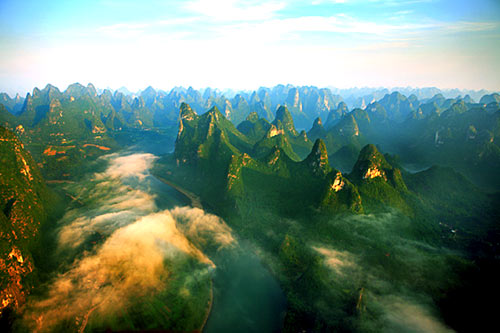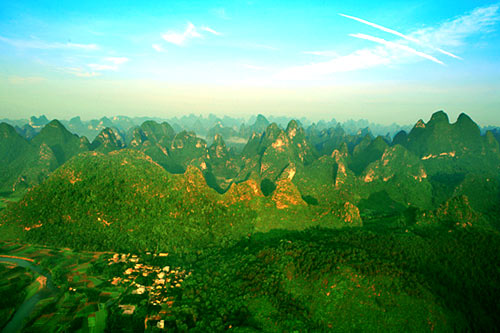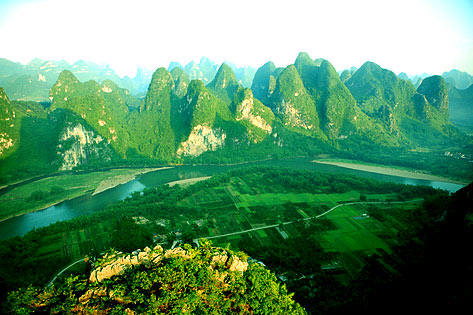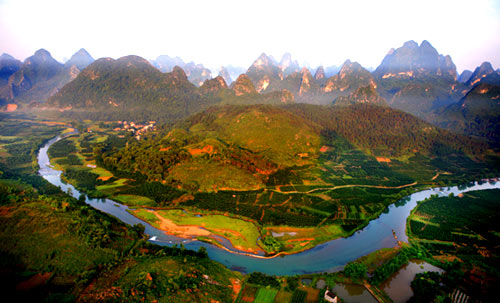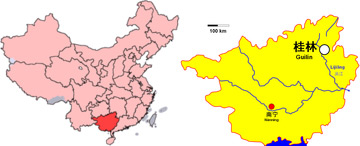| Tools: Save | Print | E-mail | Most Read |
| Guilin Scenery, Finest Under Heaven |
| Adjust font size: |
Guilin is one of China's most picturesque cities, with a population of 670,000, situated in the northeast of the Guangxi Zhuang Autonomous Region of the People's Republic of China on the west bank of the Lijiang River (also called the Li River). Its name means "
The Li River originates in the Mao'er Mountains in Xing'an county and flows through
Along the 100-kilometer stretch of the Li River, mountain peaks rise into the sky. It is one of 1. Reed-Flute Rock: a limestone cave with a large number of stalactites, stalagmites, stalacto-stalagmites, rocky curtains, and cave corals. 2. 3. 4. Elephant-Trunk Hill: a hill that looks like a giant elephant drinking water with its trunk. It is symbol of the city of 5. 6. Other attractions include:
Location of Guilin in China's map.
(China.org.cn July 17, 2007)
|
| Tools: Save | Print | E-mail | Most Read |
 |
| Related Stories |
|
Product Directory China Search |
Country Search Hot Buys |
